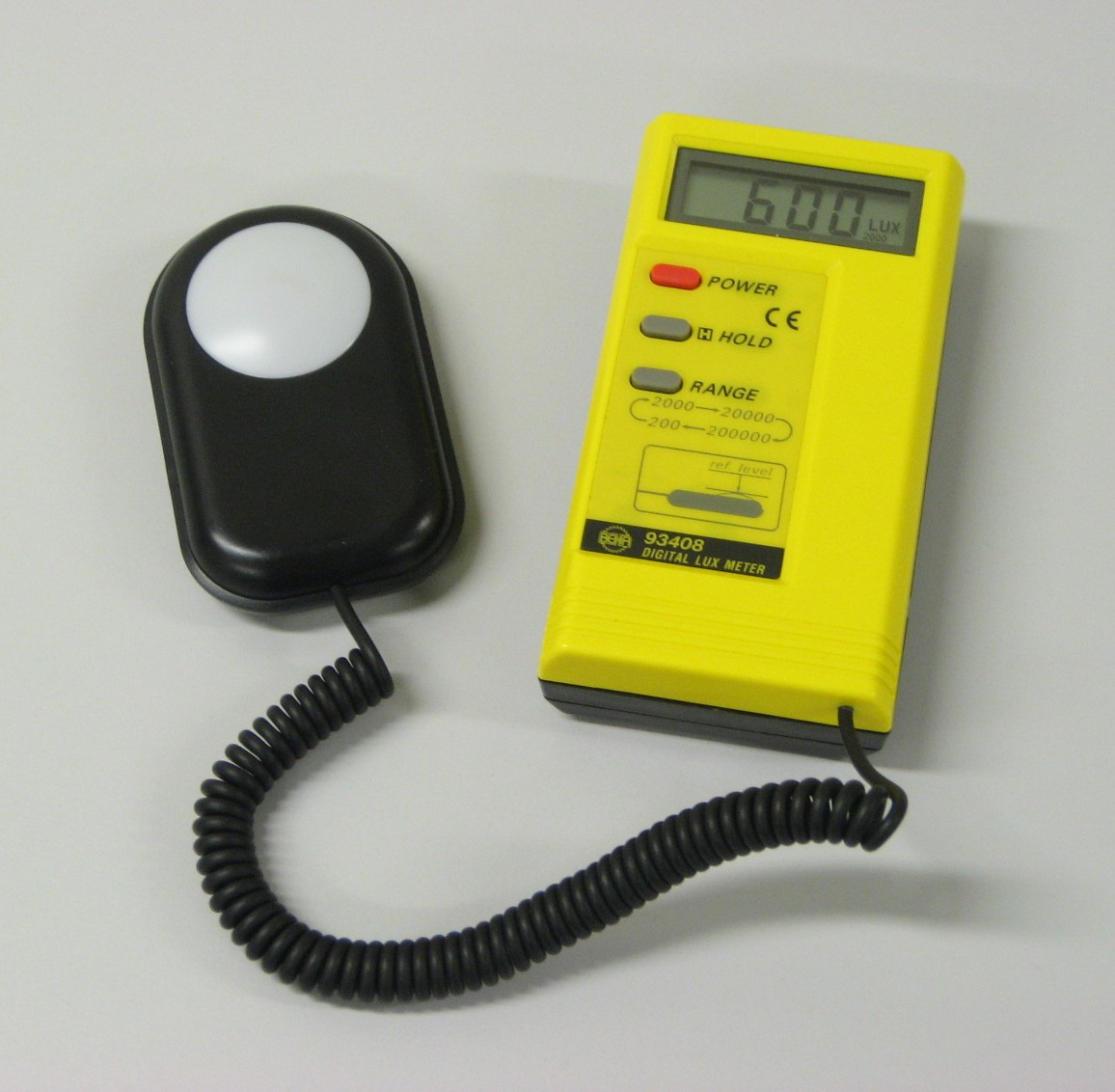
LUXO METER
Luminance is a measure of how much luminous flux is spread over a given area. One can think of luminous flux (measured in lumens) as a measure of the total «amount» of visible light present, and the luminance as a measure of the intensity of illumination on a surface. A given amount of light will illuminate a surface more dimly if it is spread over a larger area, if luminance is inversely proportional to area when the luminous flux is held constant.
One lux is equal to one lumen per square meter:
1 lx = 1 lm / m2 = 1 cd · sr / m2.
A flux of 1000 lumens, concentrated into an area of 1 square meter, lights up that square meter with a luminance of 1000 lux.
However, the same 1000 lumens, spread out over 10 square meters, produce a dimmer luminance of only 100 lux.
Achieving a luminance of 500 lux could be possible in a home kitchen with a single fluorescent light fixture with an output of 12000 lumens. To light a factory floor with dozens of times the area of the kitchen would require dozens of such fixtures. Thus, lighting a larger area to the same level of lux requires a greater number of lumens.
As with other SI units, IF prefixes can be used, for example to kilolux (klx) is 1000 lux.
What should you know about insufficient light?
- Poor lighting can be a safety hazard – misjudgment of the position, shape or speed of an object can lead to accidents and injury.
- Poor lighting can affect the quality of work, specifically in situation where precision is required, and overall productivity.
- Poor lighting can be a health hazard – too much or too little light strains eyes and may cause eye discomfort (burning, etc.) and headaches.
What are some of the most common lighting problems?
- Poor lighting can cause several problems such as:
- Insufficient light – not enough (too little) light for the need.
- Glare – too much light for the need.
- Improper contrast.
- Poorly distributed light.
- Flicker.
How do you test and correct for insufficient light problems?
To detect insufficient light, try the following:
- Measure the average illumination throughout the workplace. Compare this to the recommended levels.
- Look for shadows, especially over work areas and on stairways.
- Ask workers if they suffer from eye strain or squint to see.
- Workers should sit in their normal working positions during measurement to give you accurate results.
To correct insufficient light:
Replace bulbs on a regular schedule. Old bulbs give less light than new ones, so replace them before they burn out. Follow manufacturers’ instructions.
Clean light fixtures regularly. Dirt on light fixtures reduces the amount of light given off. Light fixtures with open tops allow air currents to move dust up through the fixtures so dust and dirt do not accumulate on them.
Add more light fixtures in appropriate places.
Paint walls and ceilings in light colours, so light can be reflected.
Use more reflected light and local lighting to eliminate shadows. For example, a covered light mounted under a transparent guard on a grinding wheel provides the added light needed to clearly see the task.
Do not position work station with light fixture directly behind worker.
What should you know about glare?
Glare is a common lighting problem. Glare is what happens when a bright light source or reflection interferes with how you are ‘seeing’ an object. In most cases, your eyes will adapt to the brightest level of light. When this adaptation happens, it becomes harder to see the details in the duller or darker areas of the work space (even though they are actually sufficiently lit!). Glare can cause annoyance and discomfort, and can actually decrease a person’s ability to see.
Reflected glare is caused by:
- Light reflected from polished, shiny or glossy surfaces.
- Glass on picture frames, or windows at night.
- Monitors / screens.
Direct glare is caused by:
- Very bright light from poorly positioned light fixtures.
- Sunlight.









